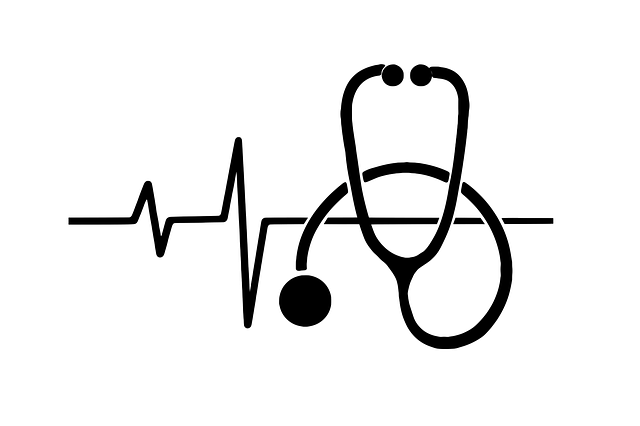Workers compensation for clinics is a vital legal and ethical framework in healthcare, protecting employees and employers through safe environments, proper training, and efficient claim management. Regulations vary but generally involve comprehensive insurance, strict record-keeping, and adherence to safety standards. Compliance mitigates risks, avoids penalties, and promotes employee well-being, satisfaction, and retention—essential for top-tier patient care. Digital solutions revolutionize compensation management by automating tasks, improving tracking, and enhancing compliance, while case studies provide valuable insights into successful implementation.
In the dynamic landscape of healthcare, ensuring compliance with workers compensation (WC) regulations is paramount for clinic success. This comprehensive guide delves into the intricacies of WC for clinics from a legal perspective, detailing benefits and protections for healthcare workers while addressing common challenges in compliance. We explore strategic preparation methods for efficient claims management and highlight technology solutions streamlining processes. Additionally, real-world case studies showcase successful compliant clinics, offering valuable best practices for navigating WC complexities.
- Understanding Workers Compensation for Clinics: A Legal Perspective
- Benefits and Protections for Healthcare Workers in Clinical Settings
- Common Challenges in Compliance with Workers Comp Regulations
- Strategies to Prepare Your Clinic's Workforce for Efficient Claims Management
- Technology Solutions for Streamlining Workers Comp Processes
- Case Studies: Success Stories of Compliant Clinics and Best Practices
Understanding Workers Compensation for Clinics: A Legal Perspective

Workers compensation for clinics is a critical aspect of legal compliance, designed to protect both employees and employers within the healthcare sector. From a legal perspective, it’s essential to understand that clinic owners and managers have specific obligations when it comes to insuring their workforce against work-related injuries or illnesses. This includes providing a safe working environment, ensuring proper training, and promptly reporting and managing any claims that arise.
The regulations surrounding workers compensation for clinics can vary by jurisdiction, but common requirements often include comprehensive insurance coverage, strict record-keeping practices, and adherence to safety standards set by regulatory bodies. By staying informed about these legal mandates, clinic operators can mitigate risks, avoid costly penalties, and foster a culture of employee well-being and satisfaction.
Benefits and Protections for Healthcare Workers in Clinical Settings

Healthcare workers in clinical settings face unique risks and challenges, making it essential for clinics to offer comprehensive workers’ compensation coverage. This is not just a legal requirement but also a crucial aspect of ensuring employee well-being and fostering a positive work environment. Workers’ compensation for clinics provides several benefits and protections for these frontline heroes.
Firstly, it offers financial security in the event of workplace injuries or illnesses. Coverage can help cover medical expenses, lost wages, and even rehabilitation costs, allowing workers to focus on their recovery without the added burden of financial stress. Additionally, it protects healthcare facilities from significant legal and financial liabilities associated with work-related incidents. By having robust workers’ compensation policies in place, clinics demonstrate their commitment to employee safety and can attract and retain qualified staff, which is vital for maintaining high-quality patient care.
Common Challenges in Compliance with Workers Comp Regulations

Many healthcare clinics struggle with navigating the complex landscape of workers’ compensation (WC) regulations, leading to significant challenges in staying compliant. These hurdles often stem from the dynamic nature of WC laws and the unique operational demands of clinical settings. One major issue is keeping up with ever-changing guidelines regarding injury reporting, worker classification, and benefit entitlements. Clinics may inadvertently face penalties for non-compliance due to these evolving standards.
Additionally, ensuring proper documentation and record-keeping can be cumbersome, especially when dealing with multiple employees and various tasks. Workers’ compensation for clinics requires meticulous tracking of work-related injuries, medical treatments, and claims processing. Inefficient systems or a lack of centralized data management can hinder compliance efforts, potentially causing delays in benefit payments and increasing administrative burdens on clinic staff.
Strategies to Prepare Your Clinic's Workforce for Efficient Claims Management

To prepare your clinic’s workforce for efficient claims management, start by implementing clear and consistent communication channels. Educate employees about the importance of prompt reporting and accurate documentation when an injury or illness occurs on the job. Regular training sessions can help demystify the workers compensation for clinics process, ensuring everyone understands their roles and responsibilities. Encourage open dialogue where employees feel comfortable discussing concerns without fear of reprisal.
Additionally, establish a streamlined system for tracking and managing claims. Utilize digital tools that facilitate real-time updates and easy access to information. Regular reviews of claim data can help identify trends or areas for improvement in workplace safety protocols. By empowering your staff with knowledge and efficient processes, you create a compliant work environment that prioritizes employee well-being while simplifying the management of workers compensation for clinics.
Technology Solutions for Streamlining Workers Comp Processes

In today’s digital era, technology plays a pivotal role in streamlining and simplifying processes within healthcare clinics, including workers compensation (for clinics) management. Digital solutions offer efficient ways to automate repetitive tasks, enhance record-keeping, and improve overall compliance. For instance, electronic claim submission and processing can reduce paperwork and speed up reimbursement, ensuring a smoother experience for both employees and employers.
Advanced technology also facilitates better tracking of workplace injuries and illnesses. Digital platforms can store and organize worker health records, making it easier to identify trends and patterns. This data-driven approach allows clinics to proactively address workplace hazards, implement safety protocols, and ultimately reduce the risk of compensable claims. By embracing these technological advancements, healthcare providers can elevate their workers compensation for clinics management to a more efficient, compliant, and effective standard.
Case Studies: Success Stories of Compliant Clinics and Best Practices

Case studies offer a compelling glimpse into real-world examples of how compliant workers compensation for clinics can be successfully implemented and managed. By examining these success stories, other healthcare providers can learn from best practices, strategies, and lessons learned by their peers. For instance, many leading clinics have adopted comprehensive risk management programs that include regular training sessions for staff on workplace safety and injury prevention, ensuring all employees understand their roles in maintaining a compliant environment.
Additionally, these clinics prioritize open communication channels, fostering an atmosphere where workers feel comfortable reporting accidents or near-misses without fear of reprisal. This proactive approach to worker compensation not only enhances safety but also fosters a culture of continuous improvement and compliance. As a result, these compliant clinics not only mitigate legal risks but also improve patient outcomes and employee satisfaction.
